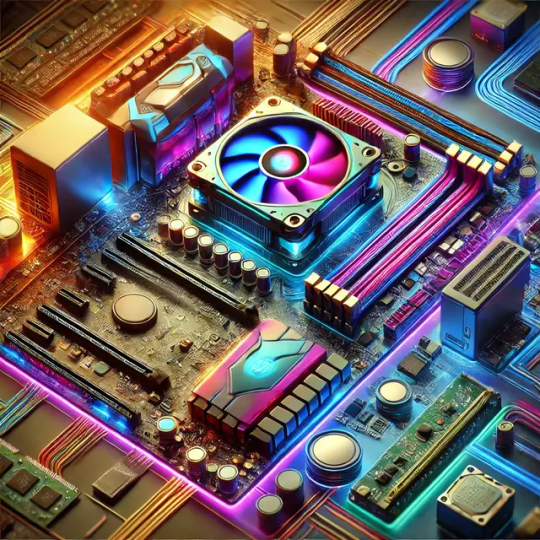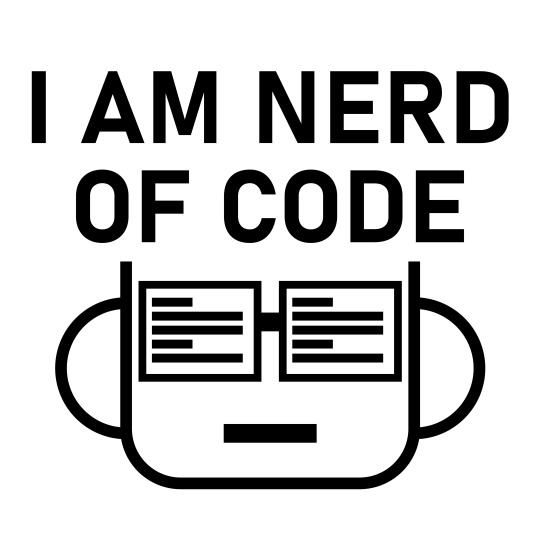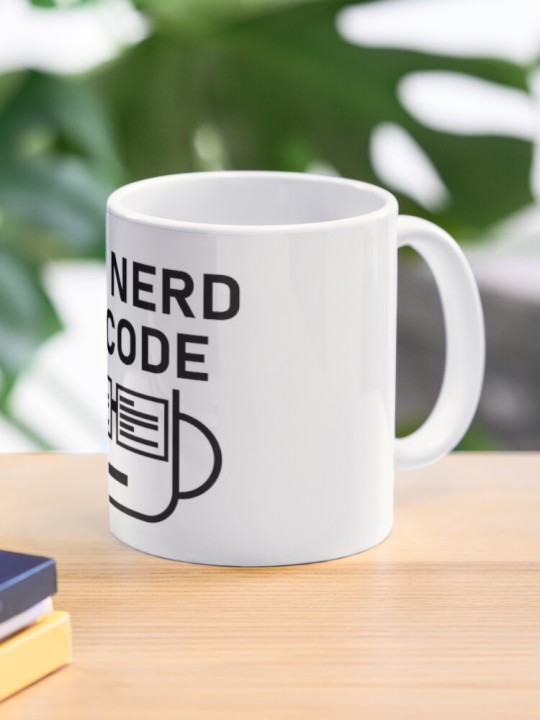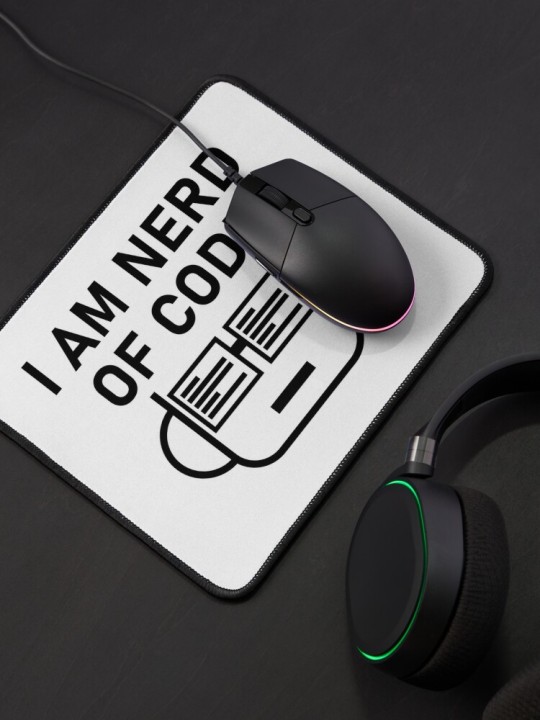#techaddict
Explore tagged Tumblr posts
Text
Exploring the World of Hardware: Types, Importance, and Tips 🔧💻⚙️
What is hardware? 🤔💻
What’s the real magic behind your gadgets? 🤔✨ It’s not just the apps or software—it’s hardware, the solid backbone like keyboards, CPUs, and screens! 🖥️⚙️ These physical components bring your tech to life, turning code into action. 💻⚡ Without hardware, your digital dreams would just be ideas floating in cyberspace! 🌌🛠️
Types of Hardware 🔧💻
Input Devices 🎹🖱️: Keyboards, mice, scanners—your hands-on tech controllers.
Output Devices 🖥️🔊: Monitors, printers, speakers—turning data into sights and sounds.
Storage Devices 💾📂: Hard drives, SSDs, and USBs—your digital lockers.
Processing Units ⚙️🧠: CPUs and GPUs—the brains behind the operations.
Communication Devices 🌐📡: Routers, modems, and network cards—your connection wizards.
Hardware is the backbone of every gadget! 🛠️✨

Importance of Hardware 🔧💡
Foundation of Technology 🏗️💻: Without hardware, software is just a dream.
Speed and Efficiency ⚡️⏱️: Faster hardware = quicker tasks and smoother performance.
Durability and Reliability 🛠️🔒: Strong hardware ensures long-lasting performance.
Supports Innovation 🚀💡: New hardware fuels the next big tech breakthroughs.
Connectivity and Communication 🌐📡: Hardware keeps you online, always.
Enhances User Experience 😎🖥️: Good hardware = better gaming, browsing, and work performance.
3 Fun Facts About Hardware 🤯🔧
The First Computer Weighed 30 Tons! 🏋️♂️💻: Early computers were massive—imagine one taking up an entire room!
Your Keyboard Holds the Power! ⌨️⚡️: Every key press is a tiny electrical signal that controls your device—your fingers are the real wizards!
Hardware Ages Like Fine Wine (Sort of) 🍷🖥️: While software updates are fast, your hardware can keep chugging along for years if treated well!
Hardware Maintenance Tips 🛠️💡
Keep It Cool! ❄️💻: Overheating is the enemy! Make sure your device stays chill with proper ventilation and cooling systems.
Clean Those Ports! 🧹🔌: Dust and grime love to sneak into your ports. A quick clean-up can save your device from performance issues.
Don’t Overload It! ⚖️📱: Running too many apps? Your hardware needs breaks! Don't push it to the max—give it some space!
Upgrade for Speed! 🚀🔧: Sometimes, upgrading RAM or swapping an old HDD for an SSD is the magic trick for a speed boost!
Power Down Properly! 🔌💤: Shutting down correctly ensures your hardware stays happy—no sudden crashes or surprises!
#Hardware#TechHardware#ComputerHardware#PCHardware#TechGear#GadgetLovers#HardwareUpgrade#TechEnthusiast#Techie#CustomPC#GamingPC#HardwareStore#BuildYourPC#PCParts#TechAddict#TechCommunity#DIYHardware#FutureTech#TechInnovation#HardwareReview#PCBuilds#TechLife#TumblrTech
0 notes
Text

Meta Quest 2 Advanced All-In-One Virtual Reality Headset 128 GB
Meta Quest is for ages 13+. Certain apps, games and experiences may be suitable for a more mature audience.
Keep your experience smooth and seamless, even as high speed action unfolds around you with a super-fast processor and high-resolution display.
Experience total immersion with 3D positional audio, hand tracking and haptic feedback, working together to make virtual worlds feel real.
Travel universes in blockbuster fantasies, scare yourself witless in horror adventures or collaborate with colleagues in innovative workspaces.
Come together in incredible social spaces and multiplayer arenas as you take in live events with friends and family, find your new workout crew or join quests with fellow adventurers.
Be truly free to roam in VR With a wireless headset, intuitive controls, a built-in battery, easy setup and no PC or console needed*
#amazon#MetaQuest2#VirtualReality#VRHeadset#AllInOne#128GB#AdvancedTechnology#GamingCommunity#ImmersiveExperience#GamingRevolution#NextLevelGaming#TechEnthusiast#VirtualWorld#GameOn#TechGadgets#TechInnovation#DigitalEntertainment#GamingExperience#GamerGear#TechAddict#VRGaming#VirtualRealityHeadset#HighTechGear#FutureTech#GamingTech#VirtualAdventure#VRCommunity#ImmersiveGaming#TechObsession
0 notes
Text




I AM NERD COLLECTION Embrace Your Inner Nerd! : Nerd of code Link to this : https://www.redbubble.com/shop/ap/147368324?ref=studio-promote
#GeekLife#TechEnthusiast#NerdyGoodness#CodingGenius#DigitalWizardry#CodeCrush#TechObsessed#GamingGeek#NerdCulture#TechSavvy#GeekPride#CodeNinja#NerdSwag#GeekChic#TechAddict
1 note
·
View note
Text
Why We Still Scroll When It Doesn't Feel Good
Dr Andrew Huberman explains what happens if you overuse social media. Does Dr Andrew Huberman think social media addiction is real? Does HubermanLab believe it is possible to develop OCD around your phone use?
youtube
View On WordPress
#addiction#BrainHealth#DigitalDetox#DigitalWellness#HealthyTechUse#informationispower#OveruseOfSocialMedia#ScreenTime#SocialMediaEffects#TechAddiction#theinfopond#Youtube
2 notes
·
View notes
Text
Dependency and the Flick of a Switch
We think we’re advanced. Smart meters. AI assistants. Satnavs instead of street signs. But take away electricity for a day, and most people would stand frozen, lost—like someone cut the strings holding up the world.
That’s the danger of dependency.
When everything runs through a single system, one switch controls it all. One power outage, one flicked circuit, one bad policy—and the lights go out. Not just in our homes, but in our heads.
Remember training for digital systems? Someone always asks, “What if the power goes?” The answer? “That doesn’t happen.” But it does. It did.
And it’s not just tech. It’s emotional too. When we lean too hard on one person, one job, one idea—we create the same risk. If it walks out the door, we’re left in the dark.
Modern life calls this progress. But really, it’s a silent surrender. We’ve built comfort on quicksand.
So ask yourself: If the lights went out—would you still know where you’re going?
#DependencyCrisis#ModernLife#DigitalVulnerability#TechAddiction#PowerOutage#FragileSystems#SocialCommentary#ElectricityMatters#DesignWithMeaning#VisualEssay#ThinkingInDesign#ContemporaryLife#AIConcerns#SatnavSociety#WhatIfTheLightsGoOut
0 notes
Text

Master the art of location sharing on any iPhone generation with our comprehensive guide. Navigate the world of the iPhone with ease. Read More
#iPhoneGeneration#GenZ#TechAddiction#DigitalEra#SmartphoneGeneration#Millennials#ScreenTime#ModernLife#TechLife#DigitalNatives#SocialMediaEra#AlwaysOnline
0 notes
Photo

🎵 Les 5 meilleures enceintes Bluetooth 2025 pour une expérience sonore exceptionnelle !
Tu cherches l’enceinte ultime pour vibrer au rythme de tes morceaux préférés ? On a sélectionné les modèles les plus performants et on te dit pourquoi l’enceinte Bluetooth Devialet Mania pourrait bien être LA révélation de l’année ! 🔥
🔊 Au programme : ✔️ Des basses abyssales et un son 360° ✔️ Une calibration acoustique automatique pour un rendu parfait ✔️ Une connectivité ultra-complète (Wi-Fi, AirPlay 2, Bluetooth 5.0)
💡 On a aussi testé d’autres modèles haut de gamme comme la Bang & Olufsen Beosound A5, la Sonos Move 2 et le Zeppelin de Bowers & Wilkins.
0 notes
Text
The Future We Longed for
It makes me sad to think how eager we all were for the future. We envisioned a world of progress, of boundless opportunity, a place where technology would enrich our lives, not consume them. Yet, here we are surrounded by so-called "advancements" that have, in many ways, stripped away the very essence of human connection.
If I had the chance, I’d go back to the ’90s in a heartbeat. No, we didn’t have the conveniences of today’s technology, but life felt real. We spoke to each other, we were present in the moment, and we lived without the constant digital distractions pulling us away from reality. There was a sense of community, a bond that wasn't mediated through screens but forged through shared experiences.
Nowadays, as I walk the dog which I do every day I can’t help but notice how detached people have become. Nearly everyone I see is glued to their phone, scrolling, texting, or watching something, oblivious to their surroundings.
Dog owners barely acknowledge their pets, and mothers pushing prams seem more engaged with their screens than with their own children. Some even hand their babies an iPhone to keep them entertained while they shop. It’s maddening.
Have we really become so enslaved by these devices that we can’t even give our undivided attention to our own children, our pets, or the world around us? This isn't progress it's a regression in the worst way.
If you haven't already, I highly recommend reading Arguments for Deleting Your Social Media Accounts Right Now by Jaron Lanier. It’s an eye-opening book that lays bare the ways in which social networks have eroded our ability to truly connect with one another.
Now, before anyone jumps in with, “But you spend a lot of time online!” yes, I do. I run blogs, produce the Angry British Conservative podcast, and enjoy my time on Xbox Live. But I’m making an observation, not being a hypocrite. There’s a difference between using technology as a tool and allowing it to dictate every waking moment of your life.
We need to step back and reclaim what we’ve lost. A conversation, a shared laugh, a moment of silence to appreciate the world these things are invaluable. If we’re not careful, we might wake up one day and realise we’ve sacrificed everything real for a digital illusion.
#Nostalgia#1990s#TechAddiction#SocialMedia#DigitalDetachment#HumanConnection#ModernLife#SmartphoneCulture#ScreenTime#TechnologyDebate#ParentingToday#SocialMediaDangers#JaronLanier#ArgumentsForDeletingSocialMedia#Observation#SocietyDecline#DigitalMinimalism#ConservativeThoughts#RealConnections#AngryBritishConservative#today on tumblr#new blog
0 notes
Video
youtube
Mobile Addiction in Kids--Is Your Child Hooked? 5 Warning Signs
#youtube#TechAddiction 🛑 ParentingTips 👶📱 DigitalDetox 🌿 ScreenTimeAwareness ⏰ HealthyHabitsForKids 🎯 FamilyFirst ❤️ MindfulTechUse 🤖 KidsAndSc#Do you think your child is addicted? Yes/No/Not sure.
0 notes
Text
The Hidden Health Costs of Digital Technology
In the digital age, technology has transformed how we live, work, and connect. The convenience and connectivity it provides are undeniable, yet these advantages come with complex, often hidden costs to our mental and physical health. Far from being neutral tools, digital devices are strategically designed to capture attention, hijack biological rhythms, and promote behaviors that can undermine well-being. Increasingly, research is uncovering the mechanisms by which technology influences our brains, bodies, and environments, raising questions about the long-term implications of modern digital habits. This essay explores the multi-layered effects of digital technology on health, from dopamine-driven attention capture and blue light disruption to physical and social consequences of screen-centric lifestyles.
Dopamine Manipulation and the Attention Economy
One of the most profound ways technology affects us is through the manipulation of dopamine, the neurotransmitter involved in motivation, reward, and pleasure. Johann Hari, author of Stolen Focus, argues that social media platforms and mobile apps capitalize on the brain’s dopamine pathways to capture attention and drive engagement. Unlike predictable rewards, which produce steady dopamine levels, technology uses intermittent reinforcement—a reward system where notifications and likes appear unpredictably—to create a cycle of anticipation and reward. This system, which is the same mechanism that drives gambling addiction, keeps users engaged by providing an irregular schedule of dopamine hits that reinforces repeated use.
Scientific research underscores this connection. A study published in Addictive Behaviors found that the unpredictable rewards offered by social media trigger dopamine surges, reinforcing compulsive checking behaviors. This constant need for validation and novelty compels users to return to their devices frequently, creating dependency. By design, social media platforms keep users engaged by leveraging the brain’s reward circuitry, with the aim not merely of providing a positive experience but of maximizing time spent on the platform. This is further substantiated by a 2022 report from the Pew Research Center, which found that the average American spends about seven hours a day engaging with screens. This level of usage erodes the capacity for sustained attention, driving a culture of perpetual distraction.
The implications of this dopamine-driven engagement go beyond reduced productivity; it shapes the way we experience pleasure, satisfaction, and meaning. Studies have shown that over-reliance on digital rewards can lead to desensitization, where natural, offline activities feel less enjoyable or fulfilling. Psychologist Dr. Anna Lembke, author of Dopamine Nation, explains that when people are constantly exposed to high-dopamine activities—such as scrolling through social media feeds or checking notifications—the brain begins to downregulate dopamine receptors, leading to a state of “dopamine deficit.” In this state, individuals feel compelled to seek more intense stimuli to achieve the same level of satisfaction, fostering a cycle of dependency and dissatisfaction. This dependency not only fragments attention but also disrupts daily life, reducing time for meaningful, real-world interactions.
The Impact of Blue Light and Circadian Disruption
Beyond attention, digital devices also impact our health through prolonged exposure to artificial blue light, which is emitted by screens and LED lights. Blue light exposure, especially in the evening, disrupts the body’s natural circadian rhythms by delaying the production of melatonin, the hormone that signals readiness for sleep. In natural environments, blue light primarily comes from sunlight, which balances it with red and infrared light and diminishes as the day progresses. However, modern devices emit isolated blue light without these balancing wavelengths, creating a signal that mimics daylight, even at night.
Dr. Alexis Cowan highlights the significance of blue light exposure from digital devices, explaining that our bodies are not biologically adapted to handle the intensity and timing of this exposure. The result is often delayed sleep onset, reduced sleep quality, and diminished cognitive function the following day. A study published in the Journal of Clinical Sleep Medicine confirms that evening screen time disrupts melatonin release, leading to poorer sleep quality and subsequent health issues. Over time, sleep deprivation can lead to an array of health complications, including weakened immune function, increased risk of obesity, and a heightened likelihood of developing chronic diseases like diabetes and cardiovascular disorders.
The effects of circadian disruption extend to mental health as well. Inadequate sleep is linked to increased anxiety, mood disorders, and cognitive impairment. Furthermore, a 2020 survey by the National Sleep Foundation revealed that 60% of Americans who use screens before bed report sleep disturbances. This trend not only reveals a personal challenge for each affected individual but also speaks to a structural issue embedded in the design of our digital environments. If left unaddressed, the widespread nature of sleep disruption has the potential to affect entire communities, resulting in productivity loss, mental health issues, and an increased burden on healthcare systems.
Physical Health Impacts and Mitochondrial Stress
The modern reliance on digital devices has also led to more sedentary lifestyles, which negatively affect physical health. As people spend more time sitting in front of screens, physical activity diminishes, which can contribute to metabolic syndrome, obesity, and cardiovascular disease. This shift to sedentary living is compounded by the impact of blue light on mitochondrial function. Mitochondria, the energy-producing organelles within our cells, are highly sensitive to light exposure. While red and infrared light, commonly present in natural sunlight, stimulate mitochondrial activity and aid cellular repair, blue light in isolation has been shown to induce oxidative stress, which impairs mitochondrial efficiency and accelerates cellular aging.
Research published in Cell Metabolism links prolonged blue light exposure to increased oxidative stress in mitochondria, particularly in tissues like the skin and eyes. This form of cellular stress contributes to chronic fatigue, reduced resilience, and an increased risk of age-related diseases. Dr. Jack Kruse, a neurosurgeon and proponent of light biology, argues that prolonged screen exposure contributes to mitochondrial dysfunction, a condition linked to chronic diseases such as obesity, heart disease, and neurodegenerative disorders. The consequences are far-reaching; as mitochondrial health declines, so does the body’s ability to generate energy, fight infections, and repair tissues, leaving individuals more vulnerable to physical and mental health challenges.
Loss of Real-World Connections and Mental Clarity
As screen time has become ubiquitous, the quality of human interaction has fundamentally shifted. Johann Hari notes that the convenience of digital communication often comes at the expense of real-world connections, which offer emotional fulfillment and mental clarity. Face-to-face interactions trigger the release of oxytocin, the hormone responsible for trust and social bonding. This hormone is crucial for emotional health, as it fosters empathy, strengthens relationships, and reduces stress. However, virtual interactions, which lack the sensory depth of in-person contact, fail to stimulate oxytocin release, leaving people feeling socially unfulfilled.
Research in Cyberpsychology, Behavior, and Social Networking reveals that individuals who spend excessive time on social media report higher levels of loneliness and depression compared to those who engage more in-person interactions. While digital platforms may simulate social connectivity, they often fail to meet the deeper emotional needs that face-to-face interactions fulfill. The shift toward virtual interactions has contributed to a growing sense of social isolation, as people substitute screen-based exchanges for genuine connection. This trend is particularly pronounced among young people, who may have never experienced socialization without the influence of digital devices.
In addition to reducing social satisfaction, excessive screen time strains cognitive health. Digital multitasking, the frequent switching between apps, notifications, and messages, impairs memory, weakens focus, and increases mental fatigue. A study from Human Factors found that individuals who frequently multitask on digital platforms experience reduced working memory capacity, which is essential for problem-solving and emotional regulation. Over time, these effects compound, reducing mental clarity and making it harder for individuals to engage deeply with tasks or thoughts. This digital dependency also erodes self-reflection and mindfulness, as people have fewer opportunities for uninterrupted, introspective moments.
Health Consequences of Modern Design Choices
The pervasiveness of screen-based environments and artificial lighting in daily life reflects broader design choices that prioritize convenience and efficiency over health. Indoor lighting, dominated by blue wavelengths, has become the norm in workplaces and homes. While energy-efficient, LED and fluorescent lighting disrupt circadian rhythms by signaling wakefulness to the brain, even during the evening. As Dr. Cowan points out, this type of lighting reduces melatonin production, which not only impairs sleep but also increases the risk of chronic health issues like cardiovascular disease and obesity. The effects of this disruption are cumulative, as exposure to blue light extends beyond screens to nearly every indoor environment.
Modern workspaces and personal environments often promote prolonged sitting, further undermining physical health. Studies have shown that sedentary behavior is associated with an increased risk of metabolic syndrome and cardiovascular disease, as movement, once naturally incorporated into daily life, now requires intentional planning. This lack of movement affects not only physical health but also cognitive function, as exercise has been shown to enhance mental clarity and reduce symptoms of anxiety and depression. The absence of movement, combined with prolonged screen time, fosters a sense of physical and mental stagnation.
Additionally, modern design choices reduce opportunities to engage with natural environments, which have restorative effects on stress and well-being. Natural settings, even in small doses, can reduce cortisol levels, improve mood, and boost cognitive resilience. However, urban spaces dominated by screens, artificial lighting, and sedentary layouts limit access to nature, reducing opportunities for the kind of recovery that outdoor environments offer. The design of indoor and urban environments has created a lifestyle that may feel efficient and productive but is fundamentally misaligned with human biology. The absence of natural light, movement, and nature exposure fosters a sense of disconnection from our bodies and surroundings, ultimately compromising both mental and physical health.
Conclusion
The intricate relationship between digital technology and health reveals a paradox: while technology promises connection, convenience, and efficiency, its design often undermines well-being in profound ways. From dopamine-driven attention traps to the disruptive effects of artificial blue light, the digital landscape shapes behaviors and environments that are misaligned with human biology. As we increasingly rely on digital devices for work, socialization, and entertainment, we must recognize the health implications of screen-centric lifestyles. The science is clear: extended screen time affects sleep, disrupts circadian rhythms, promotes sedentary behavior, and erodes real-world connections—all of which contribute to a range of physical and mental health challenges.
Johann Hari’s insights into the “attention economy” highlight how digital platforms exploit dopamine to capture attention, driving cycles of addiction-like engagement. The resulting dependence on digital rewards fragments our focus, detracts from meaningful real-world interactions, and even reshapes how we experience pleasure. Similarly, Dr. Alexis Cowan and Dr. Jack Kruse’s work underscores the health consequences of blue light exposure, which disrupts sleep and strains mitochondrial function. These biological effects, compounded by the sedentary nature of screen-based environments, increase susceptibility to chronic diseases and weaken overall resilience.
The consequences of our digitally driven lifestyles extend beyond individual well-being to societal health, affecting productivity, social cohesion, and healthcare costs. If these trends continue unchecked, we may face a future in which chronic diseases, mental health disorders, and social isolation become the norm. However, the same technology that contributes to these challenges also holds potential solutions. By prioritizing health-conscious design choices—such as implementing blue light filters, encouraging breaks for physical movement, and promoting digital mindfulness—we can create a more balanced relationship with technology. Ultimately, aligning our environments and routines with the natural rhythms of human biology may offer the most effective path toward a healthier, more connected, and more fulfilling future.
#DigitalHealth#BlueLightExposure#DopamineEconomy#ScreenTime#HealthImpact#MentalHealth#PhysicalWellbeing#CircadianRhythms#TechAddiction#MindfulTech
0 notes
Text
#DeviceAddiction#ScreenTimeManagement#DigitalWellbeing#ParentingTips#KidsAndTechnology#HealthyScreenTime#TechAddiction#DigitalDetox#DeviceFreeKids#MindfulParenting#TechBalance#KidsMentalHealth#DigitalParenting#FamilyWellbeing#ScreenTimeTips#TechSmartParenting#MentalHealthAwareness#HealthyHabits#ParentingAdvice#LimitScreenTime
1 note
·
View note
Text
क्या आपका बच्चा मोबाइल का शिकार है? लक्षणों पर ध्यान दें
मोबाइल की लत बच्चों की सेहत और विकास को प्रभावित कर सकती है। यहां कुछ प्रमुख लक्षण हैं जो संकेत देते हैं कि आपका बच्चा मोबाइल का शिकार हो सकता है: 1. अत्यधिक समय का उपयोग: यदि बच्चा दिन भर मोबाइल पर रहता है और अन्य गतिविधियाँ नजरअंदाज करता है। ⏳ 2. व्यवहार में परिवर्तन: मोबाइल न मिलने पर चिढ़चिढ़ा या गुस्से में रहना। 3. नींद की समस्याएँ: देर रात तक मोबाइल का उपयोग और सुबह उठने में कठिनाई। 4.…
#BalancedLife#ChildBehavior#ChildDevelopment#Children#DigitalWellbeing#EducationalActivities#HealthyHabits#HealthyLifestyle#MentalHealth#MobileAddiction#ParentingTips#ScreenTime#TechAddiction#education#parenting
0 notes
Text


"Design that Commands Attention, Sparks Influence. Our Creations Are a Gateway to Success."
read more.
#graphicdesign#nomophobia#phoneaddiction#digitaldetox#unplug#screenaddiction#phoneobsession#techaddiction#disconnecttoreconnect#phonefree#phonebreak#mindfulness#healthydigitallifestyle#digitalwellness#phoneaddict#breakthecycle#t-shirt#hodie#t shirt#shopee#reddit#branding#logobrand#vector#influencers#curvy model#fashionaddict#fashionista#fashion
0 notes
Text
SocialMediaGrowth: Users spend 151mins/day online! #DigitalAge #SocialMediaTrend #OnlinePresence #TechAddiction
5 notes
·
View notes
Text

SocialMediaGrowth: Users spend 151mins/day online! #DigitalAge #SocialMediaTrend #OnlinePresence #TechAddiction
#socialmediamarketer#socialmediamarketingmanager#toprated#virtualassistant#business#branding#entrepreneur#marketing#spirituality#trivia#fun facts#interesting facts#the more you know
4 notes
·
View notes
Text

My First Camera | The Canon 1000D with 75-300mm Lens
This was the first camera I ever used for photography. The Canon 1000D. Compared to higher-end cameras, it really lacks in features - but at the time, it was everything I could ever need.
The lens is the 75-300, my third after the kit 18-55 and the "nifty fifty". I brought it for portraits at home in my shed, in London, and it ended up taking me to America.
Every piece of gear I own has a story, an experience that is priceless and irreplaceable. What's yours? 🗨️
#techcommunity #techgeek #techenthusiast #techaddict #techtrends #techlover #techworld #techobsessed #technews #techguru #photographylovers #photographersofinstagram #photographersofig #photographyart #contentcreators #contentcreation #contentstrategy #contentmarketingtips #contentmarketingstrategy #contentmarketing101 #creativeminds #creativityfound #creativeprocess #creativesofinstagram #creativityeveryday #contentcreatorsworld #creatorsforchange #creativecontent #creativethinking #contentcreationtips
Check out the original post on Instagram!
2 notes
·
View notes